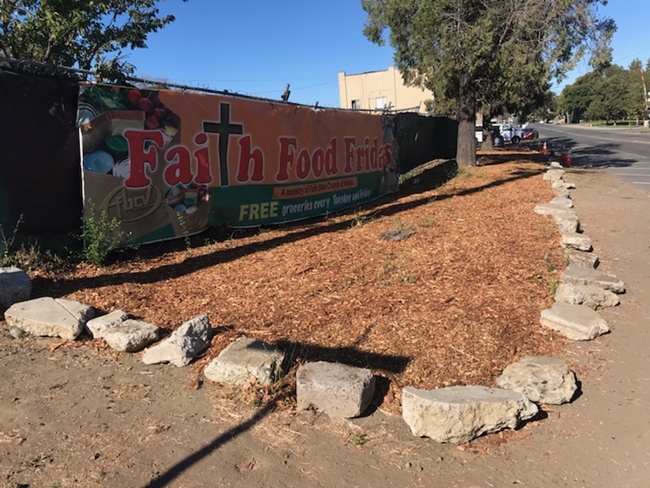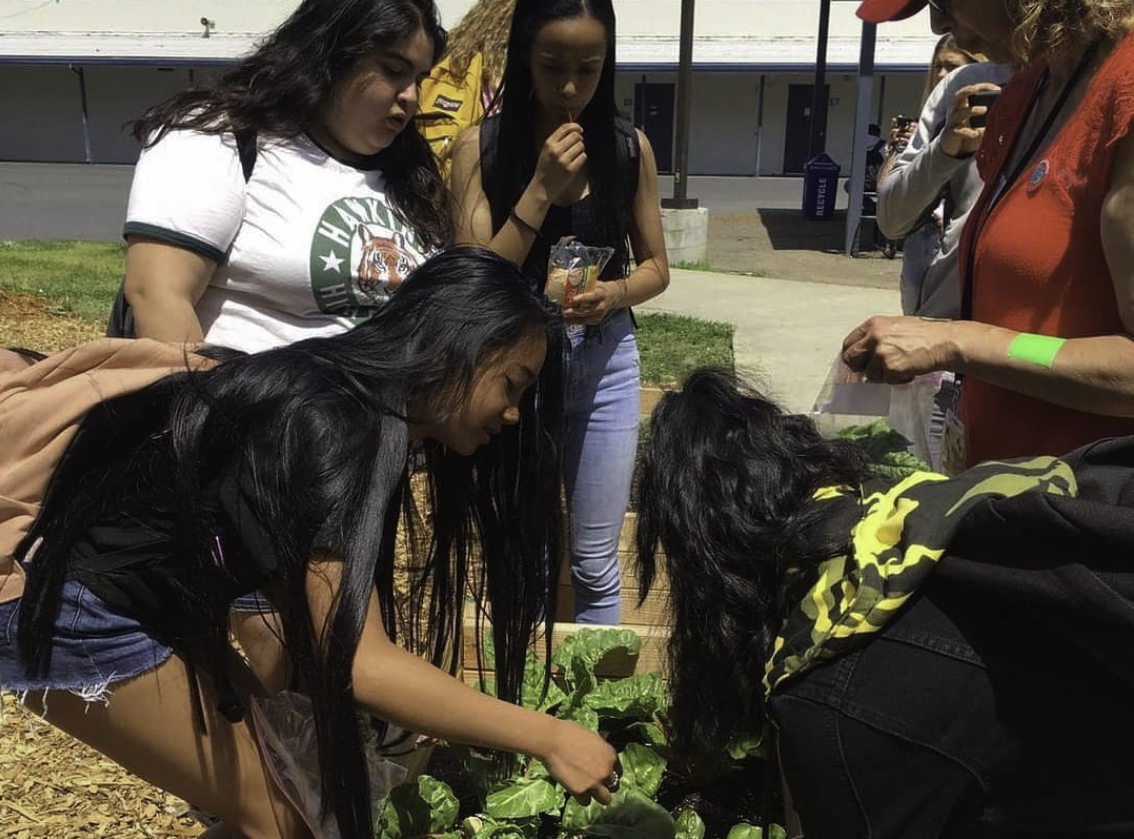Seasonal Planting for Raised Beds & the Benefits of No-Till Gardening
By Rachel Brinkerhoff, Dog Island Farm and Grow a Pear Nursery
Rachel Brinkerhoff, co-owner of Dog Island Farm/Grow a Pear Nursery, is a California licensed landscape architect with over 20 years of professional experience and is a Rescape (formally known as Bay Friendly) Qualified Professional. She has been vegetable gardening for over 35 years. Rachel taught this class to a large audience and wrote this blog to address questions she didn’t have time for during the talk. You can watch Rachel’s talk in the video here and read her responses to your questions below.
Find additional plant resources here and soil resources here.
Here are Rachel’s additional resources from the talk!
Hello Gardeners!
Thank you so much for attending the Seasonal Planting for Raised Beds & Benefits of No-Till Gardening webinar. We had a ton of questions that I unfortunately couldn’t get to, so I’ve put together this Q&A to answer some of them for you.
Do you have recommended books for the beginning gardener?
My go-to gardening book for the last 15 years that I go to all the time is The Vegetable Gardener’s Bible by Edward C. Smith. If you can only have one book, this is the book you need.
For gardening specific to the SF Bay Area I also recommend Golden Gate Gardening by Pam Pierce.
How often do you recommend fertilizing during crop growth and what organic all-purpose fertilizer do you recommend?
This really depends on what your soil is lacking and the type of fertilizer you’re using. I generally do not recommend using an all-purpose fertilizer because if you don’t know what your soil needs you may throw off the nutrient balance. Always test your soil with a lab and ask for recommendations. They will tell you what your soil needs and how much to use.
Is there a table or website to see which plants need which nutrients? For example, which plants need extra phosphorous?
The Vegetable Gardener’s Bible mentioned above has all of this information for each type of vegetable species.
Is there research about no-till being better?
The USDA Natural Resources Conservation Service has a ton of information on their website regarding the benefits of no-till. Here’s a page to get you started: https://www.nrcs.usda.gov/Internet/FSE_DOCUMENTS/nrcs141p2_015627.pdf
The barrier under the raised beds only lasts 2 years, and then gophers eat through. Will digging out the soil ruin the quality?
If you’re finding that the gopher barrier isn’t lasting due to corrosion, switch to a plastic-coated hardware cloth which won’t break down as fast.
What is the difference between tilling and aeration?
Healthy soils that haven’t been compacted will have natural aeration due to worm/insect tunnels, decomposing roots and other organic matter. Tilling is the process of mixing the top layers of soil by mechanical means either with a rototiller or with a shovel.
How do you improve heavy clay soil?
Applying gypsum and lots of organic matter will help improve heavy clay soil.
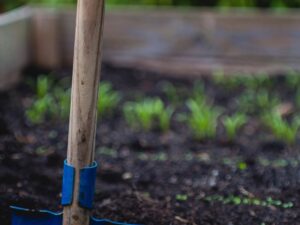
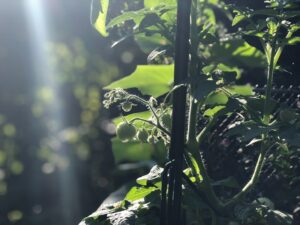
In sheet mulching is there an alternative to using paper and cardboard?
The reason you want to use thick layers of newspaper or cardboard is because it will create a strong barrier at first to keep weeds down but then eventually break down and compost into the soil.
Do you recommend the lasagna method for raised bed or just top dress the soil?
Lasagna gardening is great for both in-ground planting and raised beds.
Do you recommend hugelkultur for raised beds?
Hugelkultur was developed in Germany, which doesn’t have the dry summers that we have in the SF Bay Area. Without the summer rains, hugelkultur doesn’t work well here.
Can we use peat moss as an amendment in raised beds?
You can use peat moss but it’s not recommended to use more than 10% due to its high acidity. It is great for retaining moisture in beds but I wouldn’t recommend using it as an amendment to provide nutrients.
When can you grow tomatoes?
Tomatoes are a summer crop so you want to plant them in late spring.
What is the secret to growing Brussels sprouts? I’ve started them in fall and sprouts start forming in later winter and before they are mature the plant bolts in spring.
The secret to Brussels sprouts is that they must be planted out as transplants no later than mid-August.
Can you grow Scarlet Runner Beans in fall?
You can plant them in late summer, though winter frosts will kill the tops. They will resprout in the spring.
Growing cantaloupes in zone 9B? Any suggestions for a successful, good tasting crop?
LOTS of soil amendment and water very well during the growing and fruiting season. Make sure they are getting plenty of heat as well.
When should I plant asparagus root?
Late winter or early spring.
Do you have a good companion plant resource?
From our farm blog: http://dogislandfarm.com/fridays-gardening-tips-how-to-layout_30/
How to start a raised bed on dead grass?
Sheet mulch the grass area first and then build the bed over it.
If you put raised beds on clay soil, would you want to use something at the bottom to increase drainage?
No need to increase drainage if the bottom is open.
Is newer pressure-treated wood safe for using to build raised beds?
No. PTDF wood is treated with copper compounds, which are detrimental to soil organisms.
How often to irrigate raised beds?
This will depend on the type of soil mix you use to fill them. Some will require watering every day while others might be fine with every other day watering.
Enjoy the talk? Take this survey to help us determine future sustainable landscaping classes.
The Solano Sustainable Backyards program and the talk are generously funded by the Solano County Water Agency.

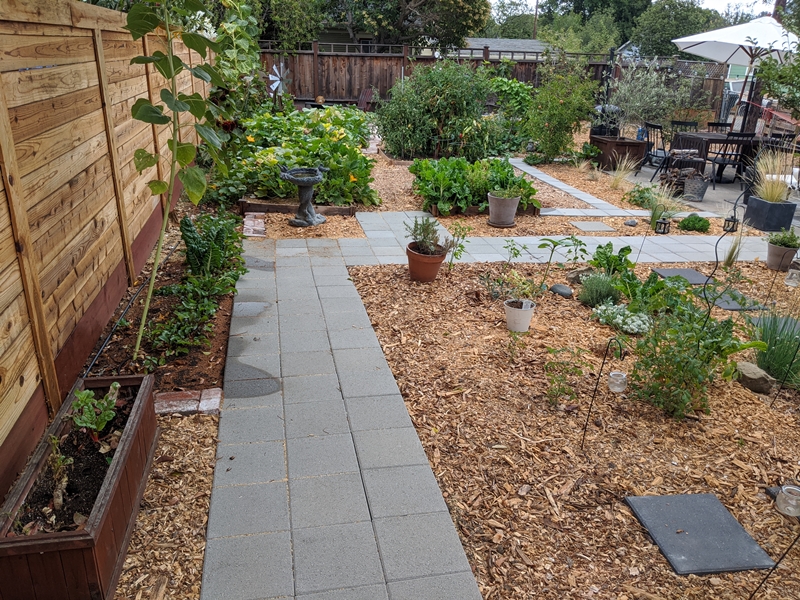


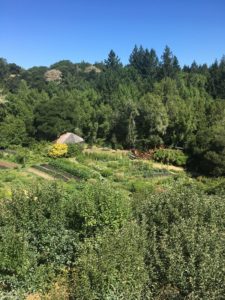 The course itself was both incredibly rigorous in its training, and yet at times also felt remarkably like summer camp. Nestled in the lush Duck Bill Creek watershed of Western Sonoma County, the property boasts a number of incredible gardens, restored forest and grasslands, an irrigation pond (which doubles as a swimming hole), and countless trails to get lost on. Communal vegetarian meals cooked in the shared kitchen with ingredients from the gardens were shared three times a day.
The course itself was both incredibly rigorous in its training, and yet at times also felt remarkably like summer camp. Nestled in the lush Duck Bill Creek watershed of Western Sonoma County, the property boasts a number of incredible gardens, restored forest and grasslands, an irrigation pond (which doubles as a swimming hole), and countless trails to get lost on. Communal vegetarian meals cooked in the shared kitchen with ingredients from the gardens were shared three times a day. The course culminated in a group design project, which for us focused on a nearby 7-acre plot of land that had recently been acquired by the Cultural Conservancy. Indigenous wisdom and learning the heritage of our host land was a focal point of the training. This came in many forms: first a small presentation by The Cultural Conservancy, then a trip to the actual site in the city of Graton, which is Southern Pomo Coast Miwok Territory. During this site visit, we all took notes, pictures and asked members of the Cultural Conservancy what they envisioned for the space to better understand their hopes and aspirations for the place. As a group, we were grateful that we were allowed to participate in a project that aims to create an inter-tribal bio-cultural heritage farm and indigenous education center. Together in a team of five, we created designs that represented all the different topics we were taught, and then on the last day presented it to the Cultural Conservancy.
The course culminated in a group design project, which for us focused on a nearby 7-acre plot of land that had recently been acquired by the Cultural Conservancy. Indigenous wisdom and learning the heritage of our host land was a focal point of the training. This came in many forms: first a small presentation by The Cultural Conservancy, then a trip to the actual site in the city of Graton, which is Southern Pomo Coast Miwok Territory. During this site visit, we all took notes, pictures and asked members of the Cultural Conservancy what they envisioned for the space to better understand their hopes and aspirations for the place. As a group, we were grateful that we were allowed to participate in a project that aims to create an inter-tribal bio-cultural heritage farm and indigenous education center. Together in a team of five, we created designs that represented all the different topics we were taught, and then on the last day presented it to the Cultural Conservancy.